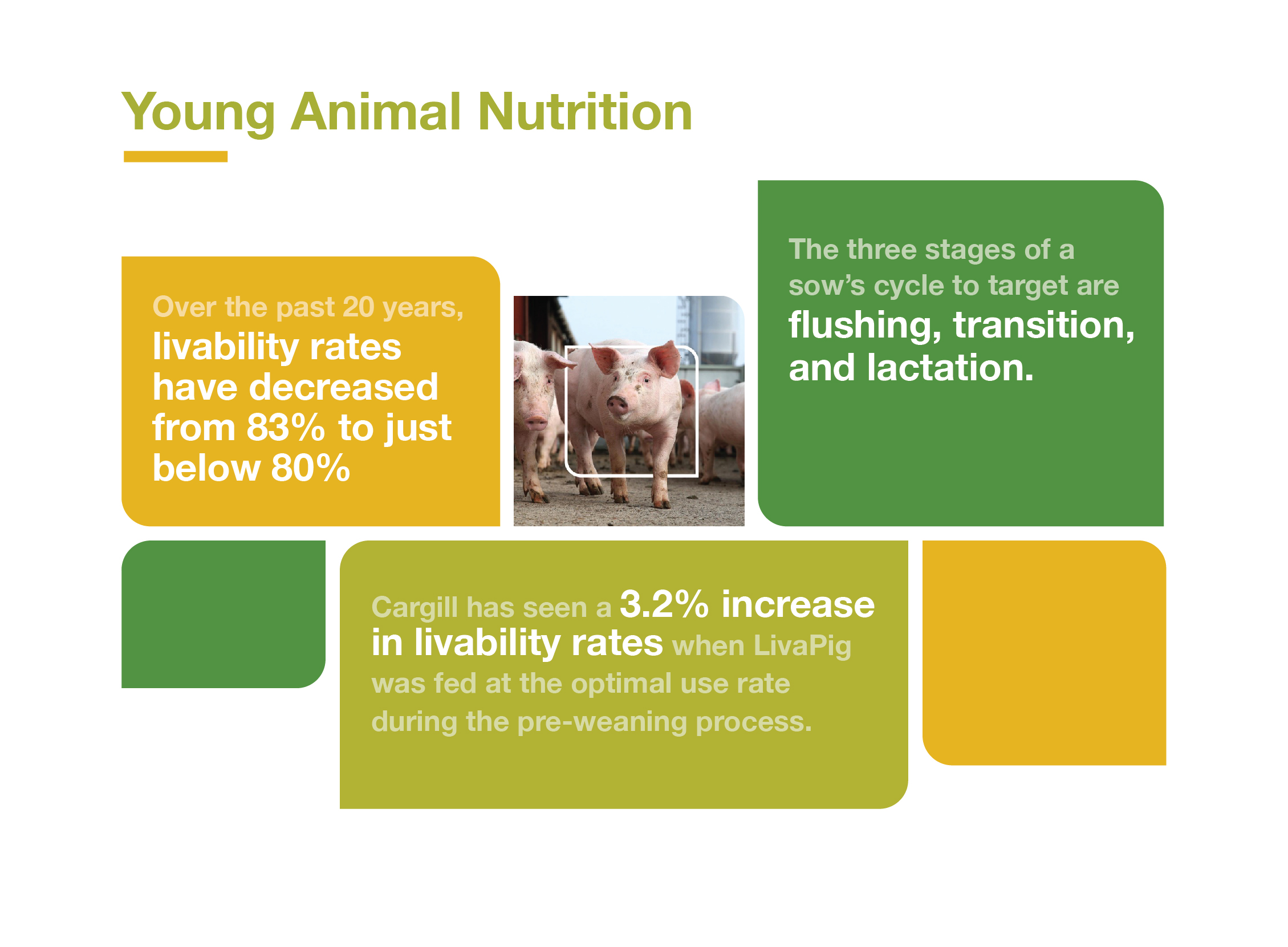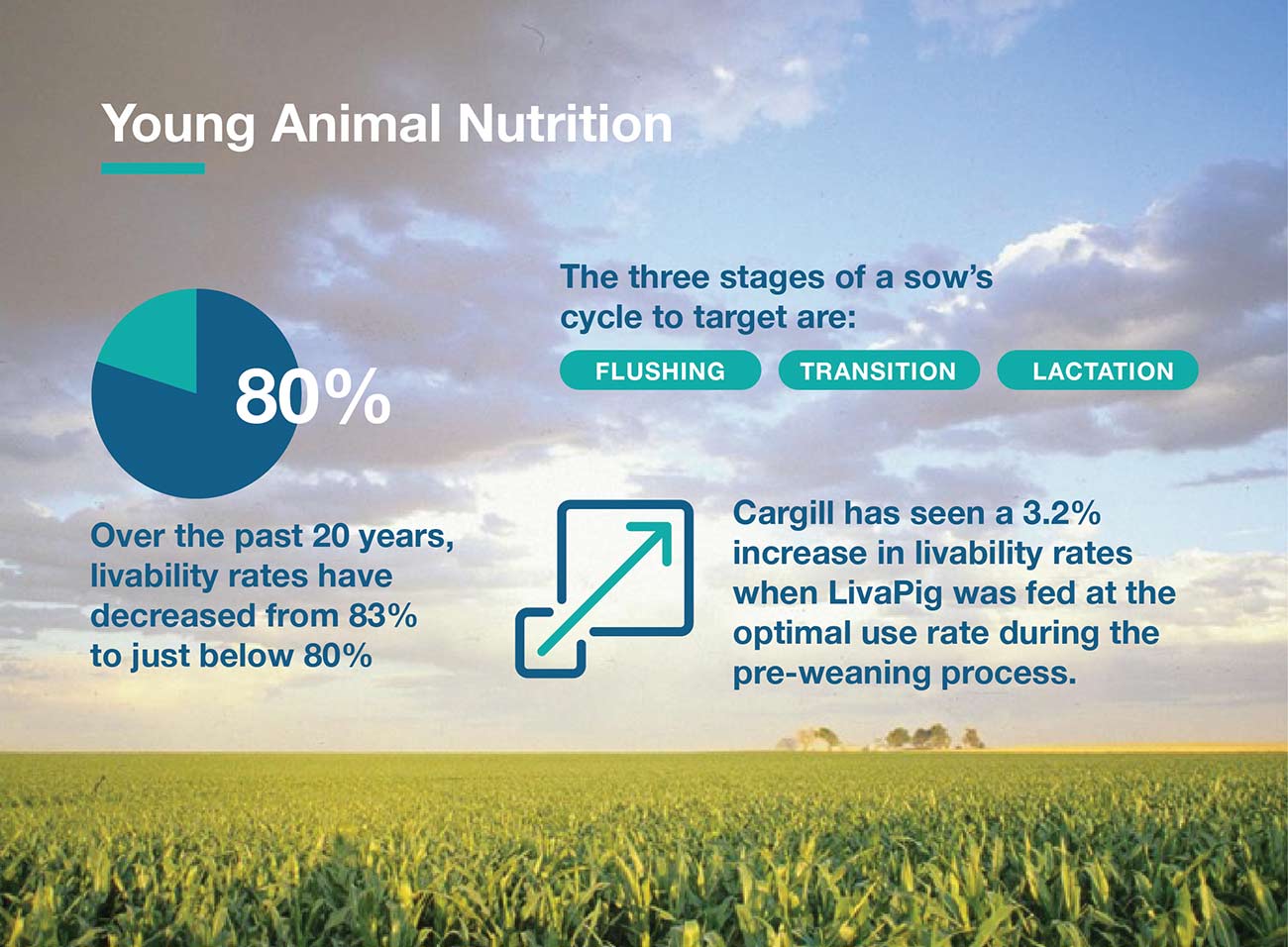
Increasing the levels of nitric oxide in a sow’s bloodstream helps improves piglet livability
- Over the past 20 years, livability rates have decreased from 83% to just below 80%.
- Piglet livability can be influenced through sow nutrition.
- To increase overall performance of the sow, LivaPig™ feed additive enhances the naturally present nitric oxide present in the blood. We have seen a 3.2% increase in livability rates when LivaPig was fed at the optimal use rate during the pre-weaning process.
Solving the Livability Challenge
Byline: Alcina Ascensao
Modern sows are more prolific than previous generations, but larger litters are often accompanied by reduced livability through more stillborn piglets and increased pre-weaning mortality. Over the past 20 years, average livability rates have decreased from 83% to just below 80%1 signaling an opportunity to help sows keep pace with rising production demands.
By focusing on the health of the sow as she prepares for farrowing and weaning, producers can increase livability rates and raise healthy, productive piglets.
What is livability and why is it important?
Livability rates focus on the percentage of potential, viable piglets a sow can raise. The rate is calculated by dividing the number of live births by the number of piglets born overall and multiplying it by 100. This calculated percentage is linked to health and performance in both the pre-weaning and post-weaning period. In turn, birth weight and vitality have a direct positive effect on piglet livability.
Improving the livability of piglets starts with the health of the sow. The three stages of a sow’s cycle to target are:
- Flushing – Helps promote better embryo quality, piglet uniformity and vitality;
- Transition – Increases birth weight, piglet vitality and lactation start; and
- Lactation – Boosts litter growth, piglet health and early feed intake.
By targeting nutritional improvements during these stages, a piglet will have more opportunities to overcome pre-birth challenges like premature placenta detachment, umbilical cord functionality loss and reduced oxygen tension in maternal blood.
There is also a need to focus on nutritional means to support increasing blood supply to reproductive tissues in the sow to enhance oxygen and nutrient flow to the placenta and umbilical cord during the farrowing process. This could also support increased livability.
Increasing nitric oxide in the bloodstream boosts overall performance during farrowing
When a sow’s blood supply is in peak condition due to the right amount of nitric oxide in the bloodstream, piglet stillbirth and early mortality rates decrease and sow farrowing endurance increases. Specifically, nitric oxide:
- Improves nutrient and blood supply to reproductive tissues and piglets by increasing placenta size;
- Creates higher oxygen and lower lactate level in umbilical cord blood to decrease the risk of asphyxia during birth;
- Promotes higher birth weight and more vital piglets due to improved placenta size; and
- Reduces pre-weaning mortality to boost livability and weaning weight.
To increase overall performance of the sow, LivaPig feed additive help enhance the naturally present nitric oxide in the blood. Studies have shown a 3.2% increase in livability rates when LivaPig was fed at the optimal use rate during the pre-weaning process. During the lactation cycle, weaning weight increased an additional 540 grams when LivaPig was included in the sow’s diet.
Focusing on the health of a sow’s bloodstream during her cycle improves piglet health and significantly increases livability rates.
[1] Agrovision, 2022

